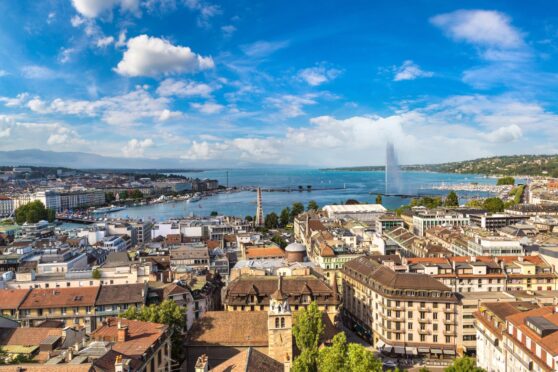
“Our researchers are busy uncovering the mysteries of the universe,” reads the sign. “Which includes why this exhibit isn’t working.”
Despite the hiccup, the European Organisation for Nuclear Research, better known as CERN, offers a plethora of gizmos and gadgets at its science gateway in Geneva, all aimed at unravelling the secrets of the universe.
Just a few steps away, my seven-year-old daughter giggles as spots of light follow her every move, painting her trajectory in vibrant hues on the floor. Soon, my son joins in, and the space becomes a kaleidoscope of colours and shapes.
These playful interactions may seem worlds apart from the complex work undertaken at CERN, home to the 27km-long Large Hadron Collider, the world’s largest and most powerful particle accelerator. Yet, in a way, they capture the essence of what CERN does — tracing the paths of minuscule quantum particles through vast experiments. It’s a reminder that even in the realm of particle physics, there’s room for joy and exploration.
For those who frequent the Alpine ski resorts of La Plagne, Chamonix or Morzine, Geneva acts as a gateway to the mountains. Yet the city itself is often bypassed as travellers pile from the arrivals hall straight into awaiting transfers.
This Easter, instead of making tracks immediately for the piste for a family ski break, we booked ourselves into a city hotel and joined 4,000 visitors who spent the weekend at CERN as it opened its doors over the Easter weekend for the first time. Established in 1952 by 12 countries including the UK, CERN is famous as the place which proved Peter Higgs’s theory of the Higgs boson, and thus the final part of the standard model of particle physics. The huge scientific machinery is buried 100 metres below ground, however CERN’s visitor centre is handily located minutes away from Geneva Airport, on tramline 18, which conveniently terminates at the centre.
The facility has invested in a purpose-built, free-to-access science gateway for all ages that goes further than being a mere museum. Scientists and engineers at the facility host science shows for children and adults as well as interactive workshops.
Geneva is predominantly a city of business and diplomacy; as such it empties out on holiday weekends. The Crowne Plaza hotel, conveniently located near to both the airport and the tram stop, has capitalised on this by offering families extended Easter breaks, with late check out and egg hunts.
After spending a morning at CERN, we joined in with the hotel’s own Easter festivities, which included face painting, gingerbread decorating and a chance for the kids to annihilate their clothes with the aid of a chocolate fountain. The hotel also, in a unique way, attempted to bring the mountain vibe to the city’s door with its very own fondue chalet.
Placed incongruously in the hotel’s car park, waiters joyfully bring you servings of cheese, wine and more bread and potatoes than you can possibly eat while you dine inside a glorified B&Q shed adorned with images of Zermatt and antique snowshoes.
It is without doubt one of the most surreal eating experiences I have encountered, however as the fondue began to ooze and the wine flowed we settled into our car park Alpine retreat, the occasional knock on the door from a waiter to check we were sufficiently topped up with cheese.
“We built the hut because the cheese was smelling out the restaurant,” reveals Loïc, the hotel manager. “And it’s proved really popular as people book it to spend the evening together.”
Smelling suitably of cheese, we rendezvoused with our driver from PowderCab, who welcomed us for our journey to Avoriaz. Situated 90 minutes from Geneva, Avoriaz is among the most accessible and family friendly resorts in the French Alps. Akin to a quantum particle, Avoriaz seems to be able to exist in two states at once. At 1,800 metres up it has enough snow to allow decent late-season skiing, and is sunny enough to enjoy a deluge of spring sunshine.
In 2011 scientists working at CERN announced that they had managed to send a particle faster than the speed of light to a detector at Gran Sasso in Italy. Although the claims were proved to be incorrect, the neutrinos fired from CERN travelled under the mountains of Haute-Savoie region on their way south.
I ponder whether my son is attempting to match the speed of a neutrino as I watch him disappear down the blue run on the Lindarets side of the resort. Over the following few days the kids alternated between practising their skiing and asking questions about the dark side of the moon over dinner at the Pierre & Vacances self-catering apartment. Asking strangers if they think we live in a simulation isn’t standard chat for a ski lift, but the French couple were polite enough to at least try to answer the question.
With a final run down the Proclou slope before taking the transfer back to Geneva we had one morning spare before heading home. There was only one place to go, and tramline 18 would help us get there.
P.S. The Higgs boson particle, which was first postulated by the great British scientist Peter Higgs, who sadly died last week at the age of 94, was first discovered in 2012. Since its discovery, the detectors at CERN have identified over 11 million instances of the famed Higgs Particle out of over a 100 trillion particle collisions. On our visit we detected a one-of-a-kind Lego model of the giant machine signed by Peter Higgs himself.
Factfile
A standard room at IHG Hotels & Resorts Crowne Plaza Geneva costs from £160 per night, with discounts available for families booking interconnected rooms. A three-night stay at Pierre et Vacances residence Atria-Crozats in Avoriaz costs £628. Shared transfers from Geneva to Morzine/Avoriaz with PowderCab cost from £27 per person.

Enjoy the convenience of having The Sunday Post delivered as a digital ePaper straight to your smartphone, tablet or computer.
Subscribe for only £5.49 a month and enjoy all the benefits of the printed paper as a digital replica.
Subscribe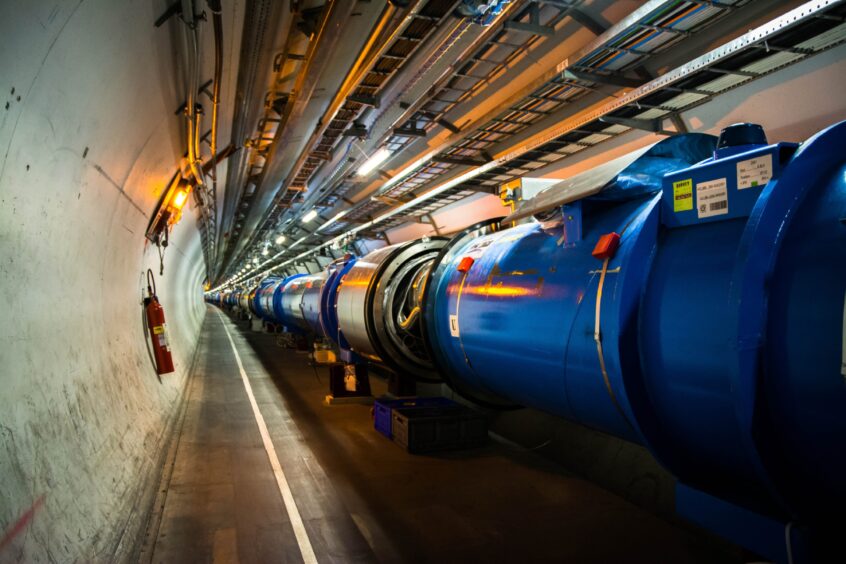 © Julien NYCZAK
© Julien NYCZAK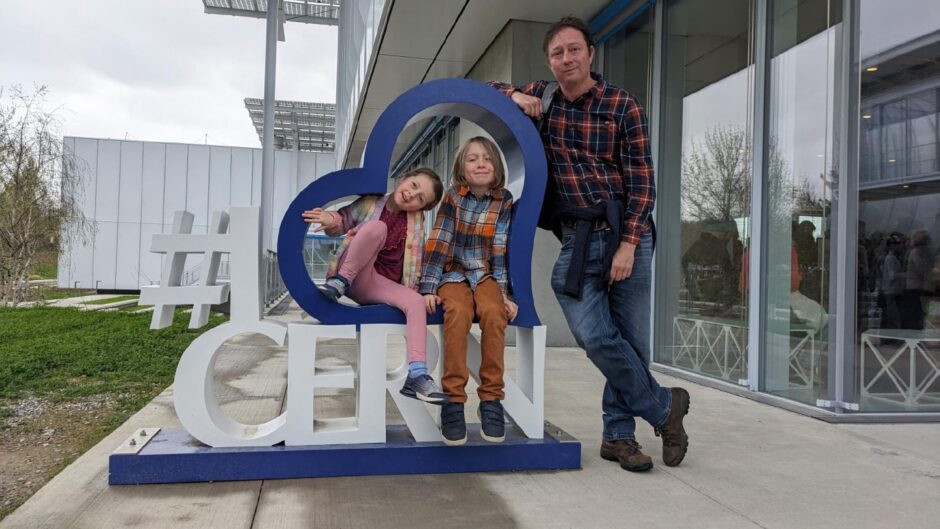
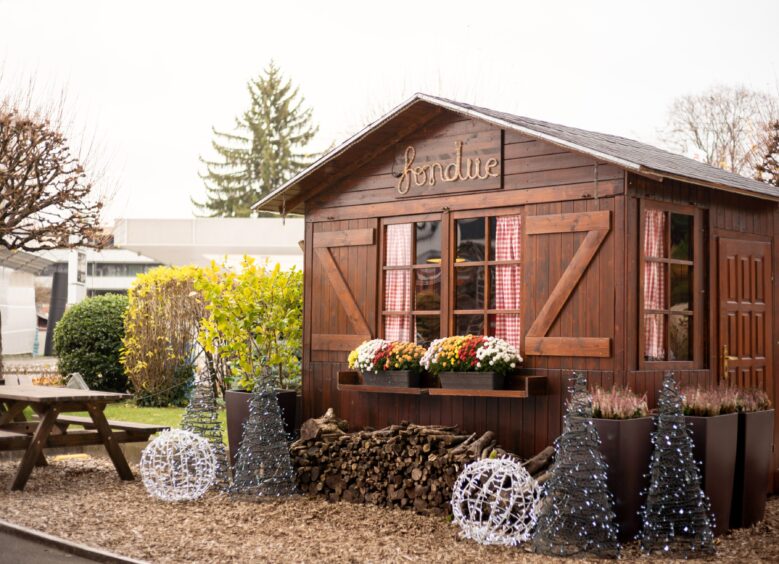
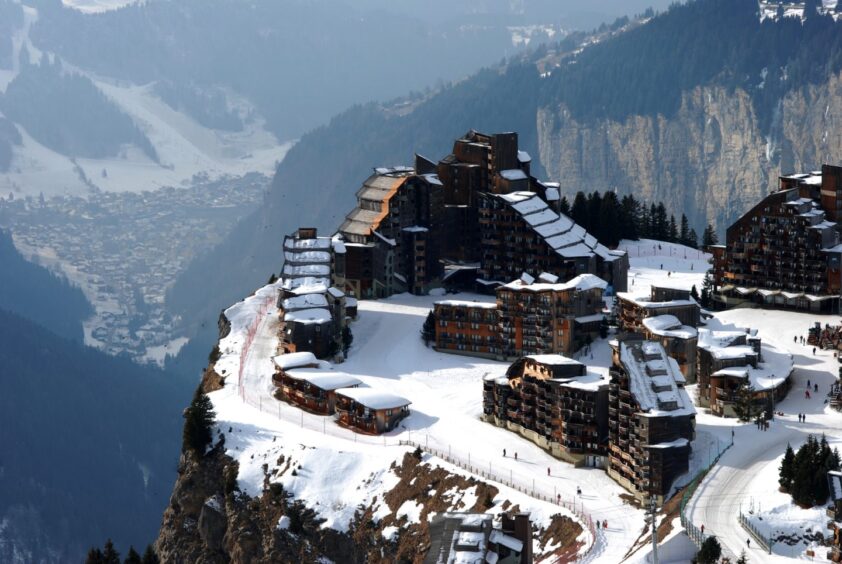 © Shutterstock / Frank Walter
© Shutterstock / Frank Walter